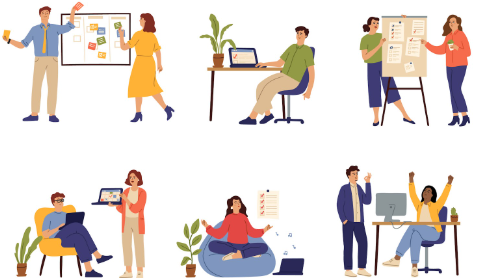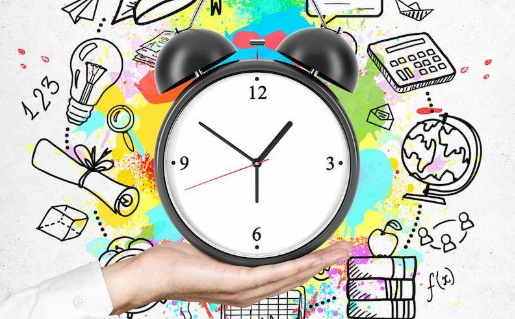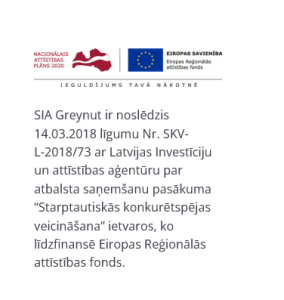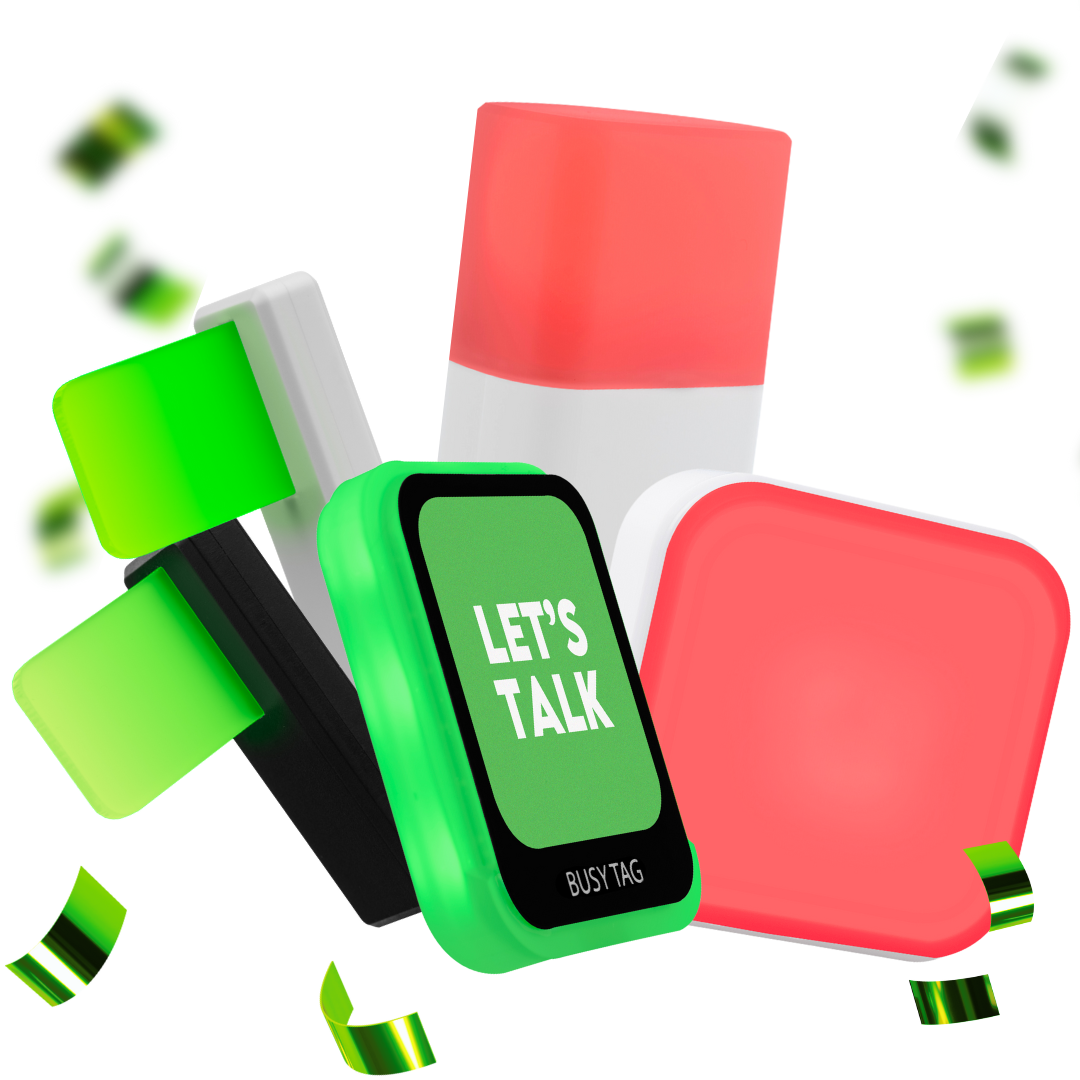Unlocking Your Productivity Potential with the Latest Focus Techniques

When it comes to focus, the tactics we use and our divided attention are challenges in our current day. Multitasking like watching a lecture while stirring soup or checking work emails makes genuine focus seem impossible.
Luckily, there are modern tools designed to help reclaim that focus. The first set of tools you’ll find are habit trackers, app timers, weighted pens, or even kitchen sand hourglasses. They shall be referenced later in the book. You can apply these changes to your lectures, morning routines, or any afternoon project session. There is no need to rework schedules, focus can simply improve through small and gradual habits.
Whether you are in lecture halls or leading a corporate team meeting, reclaiming focus starts with applying the strategies described in the following chapters. These sustainable tools don’t require added hours to any task; farding the best hours of true attention instead combats the most nagging modern distractions.
Time Blocking
Time blocking takes the usual master list and funnels it onto the calendar itself. A well-planned, time-blocked 40-hour work week can match or exceed the productivity of an uncontrolled sixty-hour work week. When clear time slots are assigned for tasks, it is far easier to perform work that requires mental focus. Aside from amplifying productivity, time blocking also curbs anxiety that comes from an uncharted schedule.
To implement a time block strategy, make a list of tasks for the day or week. Each task will then be assigned a distinct block on the calendar. While doing so, pay attention to natural energy peaks and deadlines.
For example, you may choose to guard early mornings for deep work and leave meetings and lighter duties for the afternoons. A digital calendar or Kanban board can turn those blocks into a visible roadmap.
Showing up for scheduled slots trains the brain to stay task-focused, boost concentration, and enhance output. Gradually, this habit shifts the day from responding to constant interruptions to executing priorities.
Using the Pomodoro Technique for Better Focus
The Pomodoro Technique helps keep you fully focused while preventing burnout for mental fatigue, all by scheduling short breaks in between work blocks. It works like this: you work for twenty-five minutes (termed a Pomodoro), then take a five-minute break. After four “Pomodoros”, you get a longer break of 15 to 30 minutes.
Since each work session is short, it is easier for one to tackle big projects, while also ensuring optimum quality of attention. The brief pauses not only replenish energy, but also help in preventing burnout. A kitchen timer or an app is all that is needed to implement this method on any day. For twenty-five minutes, clear your desk of everything. When the timer rings, stretch, sip some water, or gaze out the window.
Stay within the defined structure, and the quiet surges of distraction, poorly managed time, and overly demanding tasks will produce output problems that become a non-issue.
Focus Time Management

This approach adds even more value by completely eliminating calls, pings, or even multitasking by setting aside clear protected periods for deep focus work on priority goals.
Working in a focused space means that you can solve more challenging problems with a clearer mind and achieve a greater level of refinement in your work. Frequent distractions will make even simple tasks take a longer amount of time to complete. However, setting aside time free of interruptions can transform inconsistent bursts of productivity into continuous momentum.
To maintain this focused time, first identify these high-value tasks that need your utmost focus and then, reserve big, non-negotiable blocks of time in your calendar. Tell your coworkers and family that during these windows, they can't reach out to you for conversations or questions to ensure the commitment feels shared. Lastly, create your work and digital space for deep work: silence alerts, close stray tabs, and wear noise-canceling headphones if background noise cannot be avoided.
When your focus window opens, dedicate yourself to the task selected without peeking into your email or social media. By defending these hours, you help train your mind to dip deep and that practice means it becomes easier to do over time.
Automation Can Help You Achieve More
Routine chores take time and quiet multiplication of hours. Automating them helps get back minutes that can be relentless when your brain needs to solve higher order problems. Use scheduling assistants, template replies, or one-click reminder software to focus your efforts on impactful tasks.
Incorporating these simple strategies helps automate mental load, conserving willpower, allowing you to tackle creative or complex problems with ease. Together, automation and protected focus time offer sharper work rhythms, with obvious dividends to be had in both productivity and perspective.
Digital Detox and Optimizing Workspaces
Taking a break from devices like smartphones is equally important for older adults as a digital detox. Alerts that ping, buzz, and chime constantly can be overwhelming.
A digital detox involves intentionally disconnecting from devices, letting your mind rest and refocus. Combined with optimizing your workspace, these strategies can simplify digital interactions. That can benefit seniors, and phones for seniors become invaluable tools.
To slow the pace of one’s focus, redesigning the physical workspace is equally vital. Clean, organized surfaces paired with soft, unobtrusive noise support deep concentration.
Focusing on the elderly, furniture and lighting serve distinct functions. Gentle lumbar supportive seating paired with desks that keep elbows relaxed ensure comfortable posture. Well-placed lighting, like overhead bulbs and task lamps, eliminate reading shadows.
Documents are organized in labeled folders, cords move through clips instead of spiraling into chaos, and only the items absolutely necessary for the next hour are within easy reach. With limited sight and motion, the brain can stop sorting visual clutter and instead focus on achieving deeper tasks. Screen-structured work with designated breaks from screens helps older adults manage errands, explore new hobbies, or gently stay connected with family.
Visual Task Management: Clarity with Kanban Boards
Concentration sharpening because of the process being done manages work visually. One of the most common methods is a Kanban board which contains tasks, clearing mental clutter and simplifying progress tracking.
Vertical columns containing To-Do, In Progress, and Completed hold arranged tasks. Instantly, you can see what requires attention, what is progressing, and what has been ticked off the list. That wonderful clarity alleviates the burden of remembering countless pieces, so you can stay focused.
You might create a Kanban board using a corkboard and sticky notes, or get one of the many apps available online. In both cases, the basic principle remains the same.
For now, put all items that have not been completed into the To-Do section. As you begin a task, you move it to In Progress, and after completing it, you move it to Completed.
Completing tasks provides a little sense of achievement and progress. The board shows where tasks are taking too long, helps you establish a rank of significance, serves as a reminder, and helps you concentrate on the main tasks.
Final Thoughts
Getting back your focus in today’s world filled with distractions is not an easy thing to do, but can be done with practice. Strategies like time-blocking, the Pomodoro Technique, focus sprints, and Kanban boards outline your day, giving your attention more room to focus on important tasks.
Short, simple changes like a digital detox, or even just organizing your desk can greatly reduce the mental clutter that wastes time. For older adults, accessible devices transform tech from a hurdle into an everyday helper.
Implement these methods, and you will learn to control your focus, increase output, and create a more peaceful routine. Embrace these habits and tools, and you will accomplish the calmer and steadier work that today’s hectic culture often hides.
Author bio: Jay is an SEO Specialist with five years of experience specializing in digital marketing HTML keyword optimization meta descriptions and Google Analytics. A proven track record of executing high-impact campaigns to enhance the online presence of emerging brands. Adept at collaborating with cross-functional teams and clients to refine content strategy. Currently working with Pulse of Strategy as a marketing specialist. For inquiries, you can reach him at JayJaangid@gmail.com.














